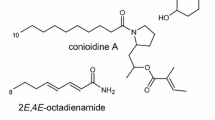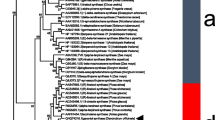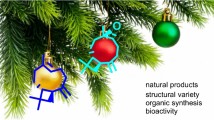Abstract
In animals and plants, fatty acids with at least three double bonds can be oxidized to prostaglandin-like compounds via enzymatic and non-enzymatic pathways. The most common fatty acid precursor in mammals is arachidonic acid (C20:4) (AA) which can be converted through the cyclooxygenase pathway to a series of prostaglandins (PG). Non-enzymatic cyclization of arachidonate yields a series of isoprostanes (IsoP) which comprises all PG (minor compounds) as well as PG isomers that cannot be formed enzymatically. In contrast, in plants, α-linolenic acid (C18:3) (ALA) is the most common substrate for the allene oxide synthase pathway leading to the jasmonate (JA) family of lipid mediators. Non-enzymatic oxidation of linolenate leads to a series of C18-IsoPs termed dinor IsoP or phytoprostanes (PP). PP structurally resemble JA but cannot be formed enzymatically. We will give an overview of the biological activity of the different classes of PP and also discuss their analytical applications and the strategies developed so far for the total synthesis of PP, depending on the synthetic approaches according to the targets and which key steps serve to access the natural products.














Similar content being viewed by others
Abbreviations
- AA:
-
Arachidonic acid
- Ac:
-
Acetyl
- ALA:
-
α-Linolenic acid
- Bet-APE:
-
Betula alba L. aqueous pollen extracts
- BINAL-H:
-
Lithium (1,1′-binaphthyl-2,2′-dioxy) aluminum dihydride
- Bz:
-
Benzoyl
- BzCl:
-
Benzoylchloride
- CAL-B:
-
Candida antarctica lipase B
- CH2N2 :
-
Diazomethane
- Co2(CO)6 :
-
Hexacarbonyldicobalt complex
- COI1:
-
Coronatine-insensitive1 (COI1)
- CuSO4 :
-
Copper sulfate
- DABCO:
-
Diazabicyclo[2.2.2]octane
- DBU:
-
1,8-Diazabicyclo[5.4.0]undec-7-ene
- DCE:
-
1,2-Dichloroethane
- DCM:
-
Dichloromethane
- DMF:
-
Dimethylformamide
- DMP:
-
Dess-Martin Periodinane
- DMSO:
-
Dimethylsulfoxide
- dPPJ1 :
-
Deoxy-J1-Phytoprostane
- GC:
-
Gas chromatography
- GC–MS:
-
Gas chromatography–mass spectrometry
- HEK cell:
-
Human embryonic kidney cell
- HPLC:
-
High performance liquid Chromatography
- HPLC–ESI–MS/MS:
-
High performance liquid chromatography–Electrospray tandem mass spectrometry
- HWE:
-
Horner–Wadsworth–Emmons
- IL:
-
Interleukin
- IsoP:
-
Isoprostane
- JA:
-
Jasmonic acid
- JA-Ile:
-
Isoleucine–jasmonic acid conjugate
- KHMDS:
-
Potassium hexamethyldisilazide
- KOH:
-
Potassium hydroxide
- LAH (LiAlH4):
-
Lithium aluminum hydride
- LC:
-
Liquid chromatography
- LiHMDS:
-
Lithium hexamethyldisilazide
- MAPK:
-
Mitogen-activated protein kinases
- MeAlCl2:
-
Methyl aluminum dichloride
- mRNA:
-
Messenger ribonucleic acid
- MS:
-
Mass spectrometry
- NaH:
-
Sodium hydride
- NaHMDS:
-
Sodium hexamethyldisilazide
- NaOH:
-
Sodium hydroxide
- NEt3 :
-
Triethylamine
- NeuroP:
-
Neuroprostane
- NF-κB:
-
Nuclear factor-kappa B
- NICI:
-
Negative ion capture chemical ionization
- NMO:
-
N-Methylmorpholine N-oxide
- [18O3]PPE1:
-
Oxygen-18-labeled phytoprostane E1
- OPDA:
-
12-Oxophytodienoic acid
- PAL:
-
Phenylalanine ammonia lyase
- Pd(OAc)2 :
-
Palladium II acetate
- PG:
-
Prostaglandin
- PP:
-
Phytoprostane
- PPA1 :
-
Phytoprostane A1
- PPAR:
-
Peroxisome proliferator-activated receptor
- PPB1 :
-
Phytoprostane B1
- PPD1 :
-
Phytoprostane D1
- PPE1 :
-
Phytoprostane E1
- PPF1 :
-
Phytoprostane F1
- PPG1 :
-
Phytoprostane G1
- PPh3 :
-
Triphenylphosphine
- PPJ1 :
-
Phytoprostane J1
- PUFA:
-
Polyunsaturated fatty acid
- Pyr.:
-
Pyridine
- ROS:
-
Reactive oxygen species
- r. t.:
-
Room temperature
- SPE:
-
Solid phase extraction
- TBDPS:
-
Tert-butyldiphenylsilyl
- TBS:
-
Tert-butyldimethylsilyl
- TEA:
-
Triethylamine
- TES:
-
Triethylsilyl
- TFA:
-
Trifluoroacetic acid
- TGA:
-
Transcription factors
- THF:
-
Tetrahydrofuran
- THP:
-
Tetrahydropyran-2-yl
- Ts:
-
Tosyl
- TsCl:
-
Tosyl chloride
- UV:
-
Ultra-violet
References
Nugteren D, Vonkeman H, van Dorp D (1967) Non-enzymatic conversion of all-cis 8, 11, 14-eicosatrienoic acid into prostaglandin E1. Recl Trav Chim Pays Bas 86:1237–1245
Roberts LJ II, Morrow JD (2000) Measurement of F(2)-isoprostanes as an index of oxidative stress in vivo. Free Radic Biol Med 28:505–513
Conconi A, Miquel M, Browse JA, Ryan CA (1996) Intracellular levels of free linolenic and linoleic acids increase in tomato leaves in response to wounding. Plant Physiol 111:797–803
Mueller MJ (1997) Enzymes involved in jasmonic acid biosynthesis. Physiol Plant 100:653–663
Rokach J, Khanapure SP, Hwang SW, Adiyaman M, Lawson JA, FitzGerald GA (1997) Nomenclature of isoprostanes: a proposal. Prostaglandins 54:853–873
Parchmann S, Mueller MJ (1998) Evidence for the formation of dinor isoprostanes E1 from alpha-linolenic acid in plants. J Biol Chem 273:32650–32655
Imbusch R, Mueller MJ (2000) Formation of isoprostane F(2)-like compounds (phytoprostanes F(1)) from alpha-linolenic acid in plants. Free Radic Biol Med 28:720–726
Mueller MJ, Mene-Saffrane L, Grun C, Karg K, Farmer EE (2006) Oxylipin analysis methods. Plant J 45:472–489
Imbusch R, Mueller MJ (2000) Analysis of oxidative stress and wound-inducible dinor isoprostanes F(1) (phytoprostanes F(1)) in plants. Plant Physiol 124:1293–1304
Krischke M, Loeffler C, Mueller MJ (2003) Biosynthesis of 14, 15-dehydro-12-oxo-phytodienoic acid and related cyclopentenones via the phytoprostane D(1) pathway. Phytochemistry 62:351–358
Thoma I, Krischke M, Loeffler C, Mueller MJ (2004) The isoprostanoid pathway in plants. Chem Phys Lipids 128:135–148
Thoma I, Loeffler C, Sinha AK, Gupta M, Krischke M, Steffan B, Roitsch T, Mueller MJ (2003) Cyclopentenone isoprostanes induced by reactive oxygen species trigger defense gene activation and phytoalexin accumulation in plants. Plant J 34:363–375
Morrow JD, Minton TA, Mukundan CR, Campbell MD, Zackert WE, Daniel VC, Badr KF, Blair IA, Roberts LJ 2nd (1994) Free radical-induced generation of isoprostanes in vivo. Evidence for the formation of D-ring and E-ring isoprostanes. J Biol Chem 269:4317–4326
Chen Y, Morrow JD, Roberts LJ 2nd (1999) Formation of reactive cyclopentenone compounds in vivo as products of the isoprostane pathway. J Biol Chem 274:10863–10868
Mueller S, Hilbert B, Dueckershoff K, Roitsch T, Krischke M, Mueller MJ, Berger S (2008) General detoxification and stress responses are mediated by oxidized lipids through TGA transcription factors in Arabidopsis. Plant Cell 20:768–785
Triantaphylides C, Krischke M, Hoeberichts FA, Ksas B, Gresser G, Havaux M, Van Breusegem F, Mueller MJ (2008) Singlet oxygen is the major reactive oxygen species involved in photooxidative damage to plants. Plant Physiol 148:960–968
Traidl-Hoffmann C, Mariani V, Hochrein H, Karg K, Wagner H, Ring J, Mueller MJ, Jakob T, Behrendt H (2005) Pollen-associated phytoprostanes inhibit dendritic cell interleukin-12 production and augment T helper type 2 cell polarization. J Exp Med 201:627–636
Karg K, Dirsch VM, Vollmar AM, Cracowski JL, Laporte F, Mueller MJ (2007) Biologically active oxidized lipids (phytoprostanes) in the plant diet and parenteral lipid nutrition. Free Radic Res 41:25–37
Barden A, Croft K, Durand T, Guy A, Mueller M-J, Mori TJ (2009) F1-phytoprostanes following ALA supplementation in men: a randomised controlled trial. J Nutr 10:1890–1895
Grun C, Berger S, Matthes D, Mueller MJ (2007) Early accumulation of non-enzymatically synthesised oxylipins in Arabidopsis thaliana after infection with Pseudomonas syringae. Funct Plant Biology 34:65–71
Loeffler C, Berger S, Guy A, Durand T, Bringmann G, Dreyer M, von Rad U, Durner J, Mueller MJ (2005) B1-phytoprostanes trigger plant defense and detoxification responses. Plant Physiol 137:328–340
Martinez-Lara E, Leaver M, George S (2002) Evidence from heterologous expression of glutathione S-transferases A and A1 of the plaice (Pleuronectes platessa) that their endogenous role is in detoxification of lipid peroxidation products. Mar Environ Res 54:263–266
Dueckershoff K, Mueller S, Mueller MJ, Reinders J (2008) Impact of cyclopentenone-oxylipins on the proteome of Arabidopsis thaliana. Biochim Biophys Acta 1784:1975–1985
Mueller MJ (2004) Archetype signals in plants: the phytoprostanes. Curr Opin Plant Biol 7:441–448
Mueller M-J, Berger S (2009) Reactive electrophilic oxylipins : Pattern recognition and signaling. Phytochemistry. http://dx.doi.org/10.1016/j.phytochem.2009.05.018
Iqbal M, Evans P, Lledo A, Verdaguer X, Pericas MA, Riera A, Loeffler C, Sinha AK, Mueller MJ (2005) Total synthesis and biological activity of 13, 14-dehydro-12-oxo-phytodienoic acids (deoxy-J1-phytoprostanes). Chem Bio Chem 6:276–280
Mariani V, Gilles S, Jakob T, Thiel M, Mueller MJ, Ring J, Behrendt H, Traidl-Hoffmann C (2007) Immunomodulatory mediators from pollen enhance the migratory capacity of dendritic cells and license them for Th2 attraction. J Immunol 178:7623–7631
Gutermuth J, Bewersdorff M, Traidl-Hoffmann C, Ring J, Mueller MJ, Behrendt H, Jakob T (2007) Immunomodulatory effects of aqueous birch pollen extracts and phytoprostanes on primary immune responses in vivo. J Allergy Clin Immunol 120:293–299
Roberts LJ II, Durand T (2004) Preface. Chem Phys Lipids 128:1–194
Jahn U, Galano JM, Durand T (2008) Beyond prostaglandins—chemistry and biology of cyclic oxygenated metabolites formed by free-radical pathways from polyunsaturated fatty acids. Angew Chem Int Ed Engl 47:5894–5955
Morrow JD, Hill KE, Burk RF, Nammour TM, Badr KF, Roberts LJ 2nd (1990) A series of prostaglandin F2-like compounds are produced in vivo in humans by a non-cyclooxygenase, free radical-catalyzed mechanism. Proc Natl Acad Sci USA 87:9383–9387
Nourooz-Zadeh J, Liu EH, Anggard E, Halliwell B (1998) F4-isoprostanes: a novel class of prostanoids formed during peroxidation of docosahexaenoic acid (DHA). Biochem Biophys Res Commun 242:338–344
Roberts LJ II, Montine TJ, Markesbery WR, Tapper AR, Hardy P, Chemtob S, Dettbarn WD, Morrow JD (1998) Formation of isoprostane-like compounds (neuroprostanes) in vivo from docosahexaenoic acid. J Biol Chem 273:13605–13612
Schmidt A, Boland W (2007) General strategy for the synthesis of b(1) phytoprostanes, dinor isoprostanes, and analogs. J Org Chem 72:1699–1706
Beckwith AJJ, Schiesser CH (1985) Regio- and stereoselectivity of alkenyl radical ring closure: a theoretical study. Tetrahedron 41:3925–3941
Rondot B, Durand T, Girard JP, Rossi JC, Schio L, Khanapure SP, Rokach J (1993) A free radical route to syn lactones and other prostanoid intermediates in isoprostaglandin synthesis. Tetrahedron Lett 34:8245–8248
Rondot B, Durand T, Rossi J-C, Rollin P (1994) Synthesis of 3,5-dideoxy-5-iodo-1,2-O-isopropylidene-beta-l-lyxo-hexofuranose derivatives. Carbohydr Res 261:149–156
Krause N, Ebert S, Haubrich A (1997) Diastereoselective protonation of chiral enolates with chelating proton donors under reagent control: scope, mechanism, and applications. Liebigs Ann:2409–2418
Roland A, Durand T, Rondot B, Vidal J-P, Rossi J-C (1996) A practical asymmetric synthesis of ent-12-epi-PGF-2 alpha methyl ester. Bull Soc Chim Fr 133:1149–1154
Noyori R, Tomino I, Yamada M, Nishizawa M (1984) Asymmetric synthesis via axially dissymmetric molecules. 7. Synthetic applications of the enantioselective reduction by binaphthol-modified lithium aluminum hydride reagents. J Am Chem Soc 106:6717–6725
El Fangour S, Guy A, Despres V, Vidal J-P, Rossi J-C, Durand T (2004) Total synthesis of the eight diastereomers of the syn–anti–syn phytoprostanes F1 types I and II. J Org Chem 69:2498–2503
Iqbal M, Evans P (2003) Conjugate addition-Peterson olefination reactions: expedient routes to cross conjugated dienones. Tetrahedron Lett 44:5741–5745
Iqbal M, Li Y, Evans P (2004) Synthesis of D12, 14–15-deoxy-PG-J1 methyl ester and epi-D12–15-deoxy-PG-J1. Tetrahedron 60:2531–2538
Vasquez-Romero A, Cardenas L, Blasi E, Verdaguer X, Riera A (2009) Synthesis of prostaglandin and phytoprostanes B1 via regioselective intramolecular Pauson–Khand reactions. Org Lett 11:3104–3107
Mikolajczyk M, Midura WH, Mohamed Ewas AM, Perlikowska W, Mikina M, Jankowiak A (2008) Horner olefination reaction in organic sulfur chemistry and synthesis of natural and bioactive products. Phosphorus Sulfur Silicon Relat Elem 183:313–325
Perlikowska W, Mikolajczyk M (2009) A short synthesis of enantiomeric phytoprostanes B1 Type I. Synthesis 16:2715–2718
Sih CJ, Price P, Sood R, Salomon RG, Peruzzotti G, Casey M (1972) Total synthesis of prostaglandins. II. Prostaglandin E1. J Am Chem Soc 94:3643–3644
Alvarez FS, Wren D, Prince A (1972) Prostaglandins. IX. Synthesis of (+−)-prostaglandin E1, (+−)-11-deoxyprostaglandins E1, F1.alpha., and F1.beta., and (+−)-9-oxo-13-cis-prostenoic acid by conjugate addition of vinylcopper reagents. J Am Chem Soc 94:7823–7827
Kluge AF, Untch KG, Fried JH (1972) Prostaglandins. X. Synthesis of prostaglandin models and prostaglandins by conjugate addition of a functionalized organocopper reagent. J Am Chem Soc 94:7827–7832
Rodriguez AR, Spur BW (2003) First total synthesis of the E type I phytoprostanes. Tetrahedron Lett 44:7411–7415
Rodriguez AR, Spur BW (2002) Total synthesis of E1 and E2 isoprostanes by diastereoselective protonation. Tetrahedron Lett 43:9249–9253
Rodriguez AR, Spur BW (2002) Total synthesis of isoprostanes via the two-component coupling process. Tetrahedron Lett 43:4575–4579
Loza E, Lola D, Freimanis J, Turovskii I, Gavars M, Liepina A (1985) 2,5-Disubstituted furans in the synthesis of 2-cyclopentenone derivatives. Latvijas PSR Zinatnu Akademijas Vestis, Kimijas Serija 4:465–472
El Fangour S, Guy A, Vidal J-P, Rossi J-C, Durand T (2005) A flexible synthesis of the phytoprostanes B1 type I and II. J Org Chem 70:989–997
Pinot E, Guy A, Guyon A-L, Rossi J-C, Durand T (2005) Enzymatic kinetic resolution of a functionalized 4-hydroxy-cyclopentenone: synthesis of the key intermediates in the total synthesis of isoprostanes. Tetrahedron Asymmetry 16:1893–1895
Pinot E, Guy A, Fournial A, Balas L, Rossi J-C, Durand T (2008) Total synthesis of the four enantiomerically pure diasteroisomers of the phytoprostanes E1Type II and of the 15–E2t-Isoprostanes. J Org Chem 73:3063–3069
Acknowledgment
We are deeply grateful to Pr. Jean-Yves Lallemand and the ICSN for their generous financial support and a part of this work was supported by the University Montpellier I grant (BQR-2008).
Author information
Authors and Affiliations
Corresponding author
About this article
Cite this article
Durand, T., Bultel-Poncé, V., Guy, A. et al. New Bioactive Oxylipins Formed by Non-Enzymatic Free-Radical-Catalyzed Pathways: the Phytoprostanes. Lipids 44, 875–888 (2009). https://doi.org/10.1007/s11745-009-3351-1
Received:
Accepted:
Published:
Issue Date:
DOI: https://doi.org/10.1007/s11745-009-3351-1




